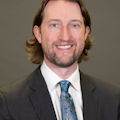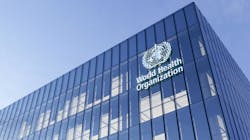World Health Organization advises delaying of nonessential dental care in areas of COVID-19 community transmission
Editor's note: This is a developing story. Updates through August 31, 2020, are detailed at the conclusion of the article.
In a guidance dated August 3, 2020, the World Health Organization (WHO) issued recommendations for the provision of essential oral health services in the context of COVID-19.1 The guidance, which is addressed to public health decision makers and dental providers, recommends prioritizing essential dental care and the delaying of nonessential dental care where COVID-19 is in an area of community transmission and not reduced to cluster cases. However, the WHO guidance also advises that oral health-care providers follow recommendations from local officials, be they on the national or community level.
The WHO has previously defined "community transmission" as "the inability to relate confirmed cases through chains of transmission for a large number of cases, or by increasing positive tests through sentinel samples (routine systematic testing of respiratory samples from established laboratories)."2
The guidance opens with a discussion of COVID-19 transmission, aerosol-generating procedures, and the unique infection risks faced by dental providers. The guidance then states as follows: "WHO advises that routine non-essential oral health care—which usually includes oral health check-ups, dental cleanings and preventive care—be delayed until there has been sufficient reduction in COVID-19 transmission rates from community transmission to cluster cases or according to official recommendations at national, sub-national or local level. The same applies to aesthetic dental treatments. However, urgent or emergency oral health care interventions that are vital for preserving a person's oral functioning, managing severe pain or securing quality of life should be provided."
The WHO recommendations began to receive increased attention by the United States dental community today, as stories by Reuters,3 The Hill,4 and Voice of America5 placed a spotlight on the WHO's recommendation to delay nonessential care. The guidance was also amplified by a WHO tweet earlier this morning, which stressed the prioritization of urgent cases and COVID-19 screening (figure 1).
Figure 1: A WHO tweet on August 11 noted that urgent cases should be prioritized, but did not address the guidance's stance on "nonessential" dentistry.
Reuters reported on the guidance after coverage of a news briefing in which Benoit Varenne, a WHO dental officer, said dental providers should "avoid or minimize procedures that may generate aerosol, prioritize a set of clinical interventions that are performed using an instrument, and of course to delay routine nonessential oral health care.”3
According to Reuters, Varenne also noted that more research was needed to ascertain the likelihood of COVID-19 transmission in dental settings.
In the United States, the WHO guidance provides an additional layer of advisement for government officials, dental boards, dental providers, and patients to consider. Since the pandemic began, recommendations have come from state government, the Centers for Disease Control and Prevention, the American Dental Association, the American Dental Hygienists' Association, state dental associations, specialist organizations, and the Occupational Safety and Health Administration, among others. Recommendations have complemented each other at times, but in other instances have appeared incongruent—especially in regard to the risks associated with aerosol-generating dental care and how to mitigate those risks. The confusion has caused tension within some areas of the profession.
Other WHO recommendations from the August 3 guidance include the following:
- Patients should be given oral health advice through remote consults or social media on how to maintain good oral hygiene, as prevention and self-care are high priorities.
- Oral health-care workers are in close proximity to patients’ faces for long periods of time, and there is frequent exposure to saliva, blood, and bodily fluids and handling of sharp instruments. As such, dental providers "are at high risk of being infected with SARS-CoV-2 or passing the infection to patients."
- Adequate ventilation is needed in dental settings. Facilities should "[a]void the use of split air conditioning or other types of recirculation devices and consider installation of filtration systems."
Additional information may be found below:
- A link to the report may be found on this WHO page.
- A PDF of the report may be found at this link: Considerations for the provision of essential oral health services in the context of COVID-19.
Update: August 12, 2020
- The American Dental Association has issued a strongly worded response to the WHO guidance. It may be found at this link.
- A DentistryIQ story related to the ADA response may be found here: ADA issues statement objecting to WHO guidance to delay nonessential dental care
Update: August 14, 2020
- This article was updated to include the WHO's definition of "community transmission"
- In the first paragraph, the term "community spread" was changed to "community transmission" to accurately reflect the WHO guidance.
Update: August 31, 2020
- An article posted by ADA News dated August 12 contains perspective on this topic from Dr. Christopher Fox, CEO of the International Association for Dental Research and American Association for Dental Research, and WHO Chief Dental Officer Benoit Varenne, PhD.
- Clarification of the WHO guidance by the DentaQuest Partnership can be found in this DentistryIQ article.
References
- Considerations for the provision of essential oral health services in the context of COVID-19. Interim guidance. World Health Organization. August 3, 2020. Accessed August 11, 2020. https://apps.who.int/iris/bitstream/handle/10665/333625/WHO-2019-nCoV-Oral_health-2020.1-eng.pdf
- Coronavirus disease 2019 (COVID-19). Situation Report – 49. World Health Organization. March 9, 2020. Accessed August 14, 2020. https://www.who.int/docs/default-source/coronaviruse/situation-reports/20200309-sitrep-49-covid-19.pdf?sfvrsn=70dabe61_4
- Nebehay S. Delay routine dental checkups, WHO urges, until COVID risk is known. Reuters. Accessed August 11, 2020. https://www.reuters.com/article/us-health-coronavirus-who-dental/delay-routine-dental-checkups-who-urges-until-covid-risk-is-known-idUSKCN2571WJ
- Hellmann J. WHO urges postponing dental checkups during pandemic. The Hill. August 11, 2020. Accessed August 11, 2020. https://thehill.com/policy/healthcare/511537-who-urges-postponing-dental-checkups-during-pandemic
- Schlein L. WHO: Non-essential dental care should be delayed during pandemic. Voice of America. August 11, 2020. Accessed August 11, 2020. https://www.voanews.com/covid-19-pandemic/who-non-essential-dental-care-should-be-delayed-during-pandemic
Zachary Kulsrud is the editorial director for Endeavor Business Media's dental group, publishers of Dental Economics, DentistryIQ, Perio-Implant Advisory, and RDH magazine.
Related
DentistryIQ'sCOVID-19 home pageAbout the Author

Zachary Kulsrud
Zachary Kulsrud is the editorial director for Endeavor Business Media's dental group, publishers of Dental Economics, DentistryIQ, Perio-Implant Advisory, and RDH magazine.
Updated July 7, 2020


